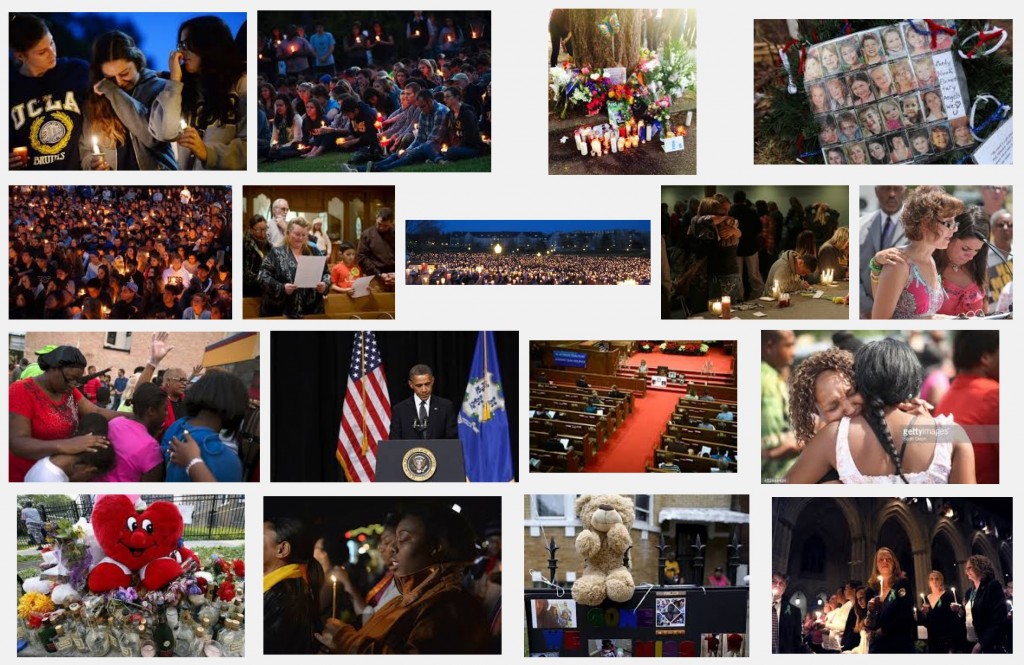Aside from my disbelief that America can let the pathetic and harrowing violence from guns continue, the latest shocking episode in Virginia raises another disturbing thought. And, Jonathan Jones has captured it quite aptly. Are we increasingly internalizing real world violence as a vivid but trivial game? Despite trails of murder victims and untold trauma to families and friends, the rest of us are lulled into dream-like detachment. The violence is just like a video game, right? The violence is played out as a reality TV show, right? And we know both are just fiction — it’s not news, it’s titillating, voyeuristic entertainment. So, there is no need for us to do anything. Let’s just all sit back and wait for the next innovative installment in America’s murderous screenplay. Bang bang, you’re dead! The show must go on.
Or, you could do something different, however small, and I don’t mean recite your go-to prayer or converge around a candle!
From Jonathan Jones over at the Guardian:
Vester Flanagan’s video of his own murderous shooting of Alison Parker and Adam Ward shows a brutal double killing from the shooter’s point of view. While such a sick stunt echoes the horror film Peeping Tom by British director Michael Powell, in which a cameraman films his murders, this is not fiction. It is reality – or the closest modern life gets to reality.
I agree with those who say such excreta of violence should not be shared on social media, let alone screened by television stations or hosted by news websites. But like everything else that simply should not happen, the broadcasting and circulation of this monstrous video has happened. It is one more step in the destruction of boundaries that seems a relentless rush of our time. Nothing is sacred. Not even the very last moments of Alison Parker as we see, from Flanagan’s point of view, Flanagan’s gun pointing at her.
Like the giant gun Alfred Hitchcock used to create a disturbing point of view shot in Spellbound, the weapon dominates the sequence I have seen (I have no intention of seeking out the other scenes). The gun is in Flanagan’s hand and it gives him power. It is held there, shown to the camera, like a child’s proud toy or an exposed dick in his hand – it is obscene because you can see that it is so important to him, that it is supposed to be some kind of answer, revenger or – as gun fans like to nickname America’s most famous gun the Colt 45 – “the Equaliser”. The way Flanagan focuses on his gun revealed the madness of America’s gun laws because it shows the infantile and pathetic relationship the killer appears to have with his weapon. How can it make sense to give guns so readily to troubled individuals?
What did the killer expect viewers to get from watching his video? The horrible conclusion has to be that he expected empathy. Surely, that is not possible. The person who you care about when seeing this is unambiguously his victim. This is, viewed with any humanity at all, a harrowing view of the evil of killing another person. I watched it once. I can’t look again at Alison Parker’s realization of her plight.
The sense that we somehow have a right to see this, the decision of many media outlets to screen it, has a lot to do with the television trappings of this crime. Because part of the attack was seen and heard live on air, because the victims and the perpetrator all worked for the same TV station, there’s something stagey about it all. Sadly people so enjoy true life crime stories and this one has a hokey TV setting that recalls many fictional plots of films and TV programs.
It exposes the paradox of ‘reality television’ – that people on television are not real to the audience at all. The death of a presenter is therefore something that can be replayed on screens with impunity. To see how bizarre and improper this is, imagine if anyone broadcast or hosted a serial killer’s videos of graphic murders. How is viewing this better?
But there is still another level of unreality. The view of that gun pointing at Parker resembles video games like Call of Duty that similarly show your gun pointing at virtual enemies. Is this more than a coincidence? It is complicated by the fact that Flanagan had worked in television. His experience of cameras was not just virtual. So his act of videoing his crime would seem to be another crass, mad way of getting “revenge” on former colleagues. But the resemblance to video games is nevertheless eerie. It adds to the depressing conclusion that we may see more images taken by killers, more dead-eyed recordings of inhuman acts. For video games do create fantasy worlds in which pointing a gun is such a light thing to do.
In this film from the abyss the gun is used as if it was game. Pointed at real people with the ease of manipulating a joystick. And bang bang, they are dead.
Read the entire article here.
Image courtesy of Google Search.



